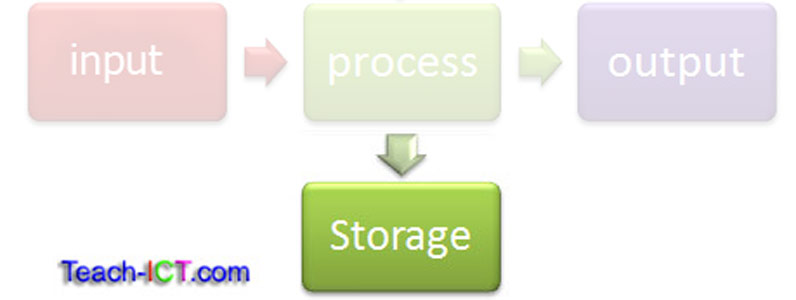 A LEVEL COMPUTING
A LEVEL COMPUTING Input, output, storage
Input, output, storage
 Theory
Theory
4. Purpose of storage devices

The purpose of storage devices is to store data and software for later use.
Stored data may be loaded back into the CPU for further processing at some point or it may be directed to an output device.
For example, with read-write storage devices such as a hard disk, the central processing unit (CPU) is able to write data to the hard disk in the form of formatted files. The CPU is also able to read data and software from the hard disk in readiness for processing to take place.
There is no distinction between software and data as far as the storage device is concerned. They are both a form of digital data.
The storage device will make use of some specific physical effect in order to represent the data. For example, optical devices such as CD, DVD and Blu-Ray all make use of a laser to burn dark pits onto the medium. Each dark pit is a binary digit e.g. 1 whilst the absence of a pit is the opposite binary bit e.g. 0 if the pit is a 1.
Hard disks and magentic tape on the other hand make use of magnetic domains to represent data.
Flash drives make use of electrical charge to store the data.
Challenge see if you can find out one extra fact on this topic that we haven't already told you
Click on this link: Computer Storage Devices
Copyright © www.teach-ict.com

